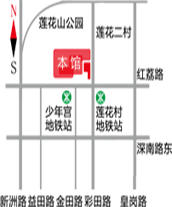
- PREFACE
-
Chen Xiangbo
Unconsciously, the China South Korea Ink and wash Art Exchange Exhibition, jointly initiated by our museum and the Gwangju Yi Zhai Art Museum in South Korea, has entered its ninth session. "Nine" has a long-term significance in China, which also marks a stable and in-depth development stage of communication and cooperation between our two museums. Especially for East Asian countries with common cultural origins, I firmly believe that the cultural bridge built between our two museums will become more valuable and meaningful over time. This is also one of the driving forces behind our efforts to do well in every communication activity.
Ink painting art is a carrier of the Eastern artistic spirit, always maintaining the genes and characteristics of the Eastern nation. With the continuous updating of historical development, ink painting art is not only a trend of contemporary Asian art forms, but also plays a role in ethnic cognition and spiritual conscience in contemporary social development and cultural patterns. Just as we enjoy the convenience of modernization with the development of modernization, its negative impact also comes with it. Our home, sky, land, rivers, and mountains are increasingly facing serious environmental crises, and the phenomenon of "cultural globalization" has made the face and spirit of Eastern culture constantly assimilated, forgotten, and ignored by modern times. However, as Easterners, we have never forgotten our spiritual memory and bloodline symbol - "harmony between heaven and humanity" is still our ideal. In the depths of our memory, "Peach Blossom Spring" and "Orchid Garden Xiuxi" are not only human paradise, but also our spiritual home. The spirit of Eastern art, as a long-standing spiritual "home" of the Eastern nation, is closely related to every one of us today, especially in the face of many difficulties in modernization. Eastern civilization will give us more directions and hope. The theme of the "Oriental Home - China South Korea Ink Exchange Exhibition" demonstrates the cultural attitude of Eastern art, calling for our imagination and creation of the "Oriental Home" through ink painting. This is an attempt, and the ink painting of the "Oriental Home" by artists from China and South Korea is actually a concern for the current social development, care for the natural ecology, and nostalgia for traditional culture.
I believe that the concept of "Oriental Home" will accumulate and inspire more artists to demonstrate their passion and talent in the field of ink painting. Their works will elaborate on the unique understanding and beautiful nostalgia of artists and intellectuals towards "home" from different perspectives.
Thank you again to the Korean colleagues who have worked hard for this exhibition.



